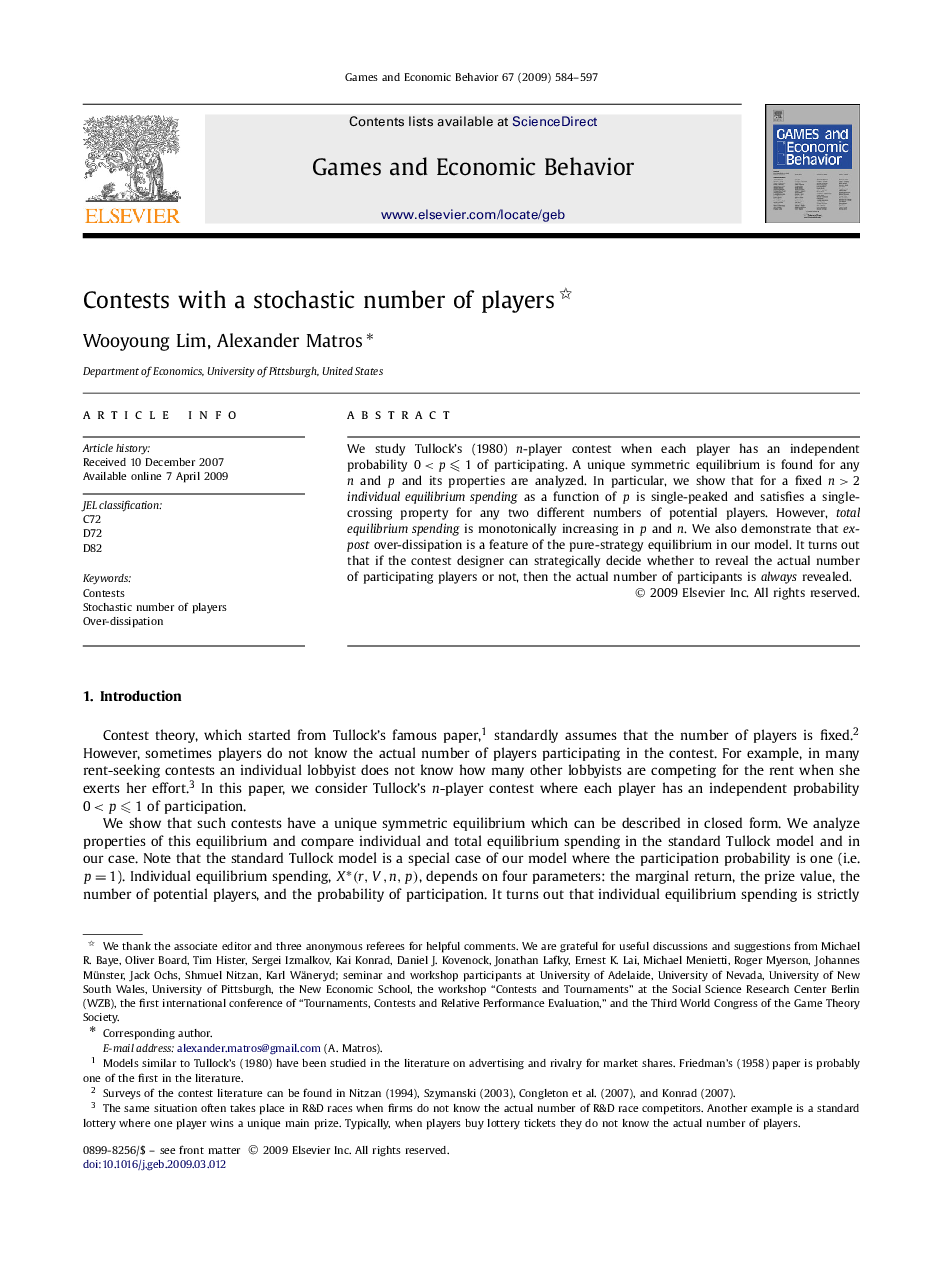| Article ID | Journal | Published Year | Pages | File Type |
|---|---|---|---|---|
| 5072753 | Games and Economic Behavior | 2009 | 14 Pages |
We study Tullock's (1980) n-player contest when each player has an independent probability 0 < p ⩽ 1 of participating. A unique symmetric equilibrium is found for any n and p and its properties are analyzed. In particular, we show that for a fixed n > 2 individual equilibrium spending as a function of p is single-peaked and satisfies a single-crossing property for any two different numbers of potential players. However, total equilibrium spending is monotonically increasing in p and n. We also demonstrate that ex-post over-dissipation is a feature of the pure-strategy equilibrium in our model. It turns out that if the contest designer can strategically decide whether to reveal the actual number of participating players or not, then the actual number of participants is always revealed.
